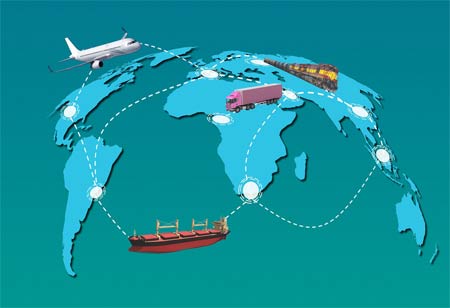THANK YOU FOR SUBSCRIBING
THANK YOU FOR SUBSCRIBING

By
Logistics Transportation Review | Friday, March 08, 2024
Stay ahead of the industry with exclusive feature stories on the top companies, expert insights and the latest news delivered straight to your inbox. Subscribe today.
3PL providers are vital in Europe's supply chain, offering cost-effectiveness, operational efficiency, and specialised knowledge, supporting SMEs, and influencing trends like e-commerce and sustainability.
FREMONT, CA: Third-party logistics (3PL) providers have emerged as integral components within Europe's supply chain framework. In various sectors, enterprises are progressively entrusting functions such as warehousing, transportation, and value-added services to 3PLs to enhance cost-effectiveness and operational efficiency and leverage specialised knowledge. This burgeoning trend underscores the imperative to scrutinise the economic ramifications of 3PL services in Europe, with a particular focus on cost dynamics.
Cost Advantages of 3PL Partnerships
Streamlined Fixed Costs: Companies can minimise substantial investments in warehouse infrastructure, transportation equipment, and personnel by tapping into a 3PL provider's established network. This strategic move liberates capital for vital core business activities.
Optimized Variable Costs: 3PLs provide economies of scale, enabling companies to harness their expansive logistics networks for more favourable transportation rates and negotiate advantageous bulk discounts on warehousing space.
Enhanced Operational Efficiency: Leveraging their proficiency in refining storage, picking and packing processes, and transportation routes, 3PLs contribute to reduced labour costs, inventory carrying expenses, and damage rates.
Adaptability and Scalability: Businesses can effortlessly tailor their logistics requirements in response to demand fluctuations by partnering with a 3PL. This eradicates the necessity of maintaining excess in-house capacity during slower periods.
Incorporation of Technological Advancements: Numerous 3PLs heavily invest in state-of-the-art warehouse management systems (WMS), transportation management systems (TMS), and other cutting-edge logistics technologies. Companies can access these innovations without incurring upfront costs or integration challenges.
Cost Considerations for Businesses
The pricing structure for 3PL services is contingent upon various factors such as the scope of services provided, operational intricacies, and the volume of goods handled. Businesses must meticulously assess the cost framework, ensuring its alignment with their budget constraints and anticipated benefits.
Beyond the fundamental charges, vigilance is essential in recognising potential concealed expenses, including per-pick and per-unit handling charges and fuel surcharges. Establishing transparent communication channels with the 3PL is vital for precise cost estimation.
The contractual terms governing the 3PL agreement, encompassing minimum volume commitments, early termination penalties, and service level agreements (SLAs), significantly influence overall costs. A strategic approach involving careful negotiation and comprehensive comprehension of these terms is pivotal.
Furthermore, integration costs associated with merging internal systems with the 3PL's technological platform should be noticed. While seamless data exchange is imperative for efficient operations, businesses must be prepared for potential upfront investments in technology integration to ensure a cohesive and effective partnership.
Economic Impact of 3PL in Europe
The 3PL industry significantly contributes to European job creation, sustaining a workforce spanning millions in warehousing, transportation, and technology sectors. This employment landscape bolsters economic growth and is a significant source of tax revenue generation. Moreover, 3PLs are pivotal in optimising logistics processes and enhancing supply chain efficiency within the European Union. This results in the seamless and efficient movement of goods across borders, reducing overall transportation costs and fostering a more competitive market environment. Additionally, 3PLs facilitate the growth of small and medium-sized enterprises (SMEs) by providing access to advanced logistics capabilities without necessitating substantial upfront investments. This strategic support contributes to expanding and innovating businesses within the European economy.
Trends and Considerations
Today, several trends and considerations are shaping the logistics industry. The E-commerce Boom is significantly impacting logistics, necessitating 3PLs to tailor fulfilment services to meet the customer-centric demands of online retail. Businesses should explore 3PL partners with robust e-commerce fulfilment capabilities to stay competitive in this evolving market.
Sustainability has emerged as a top priority for both European businesses and consumers. Logistics providers that offer eco-friendly warehousing solutions, optimise transportation routes, and incorporate green technologies into their operations will enjoy a competitive advantage in this environmentally conscious era.
Furthermore, the transformative impact of automation and robotics on logistics must be noticed. Companies are encouraged to align themselves with 3PLs actively investing in automation technologies to enhance operational efficiency and achieve cost reductions. As the industry evolves, staying abreast of these latest trends and considerations is paramount for businesses seeking sustainable growth and competitiveness.
3PL services present European businesses of varying scales with notable cost advantages and economic benefits. By meticulously examining cost factors, enterprises can harness 3PL collaborations to refine their supply chains, enhance operational efficiency, and attain a competitive edge. Strategic alignment with an appropriate 3PL provider, attentive consideration of contemporary industry trends, and emphasis on sustainable practices emerge as pivotal elements in optimising the economic ramifications within the dynamic landscape of the European market.
I agree We use cookies on this website to enhance your user experience. By clicking any link on this page you are giving your consent for us to set cookies. More info





